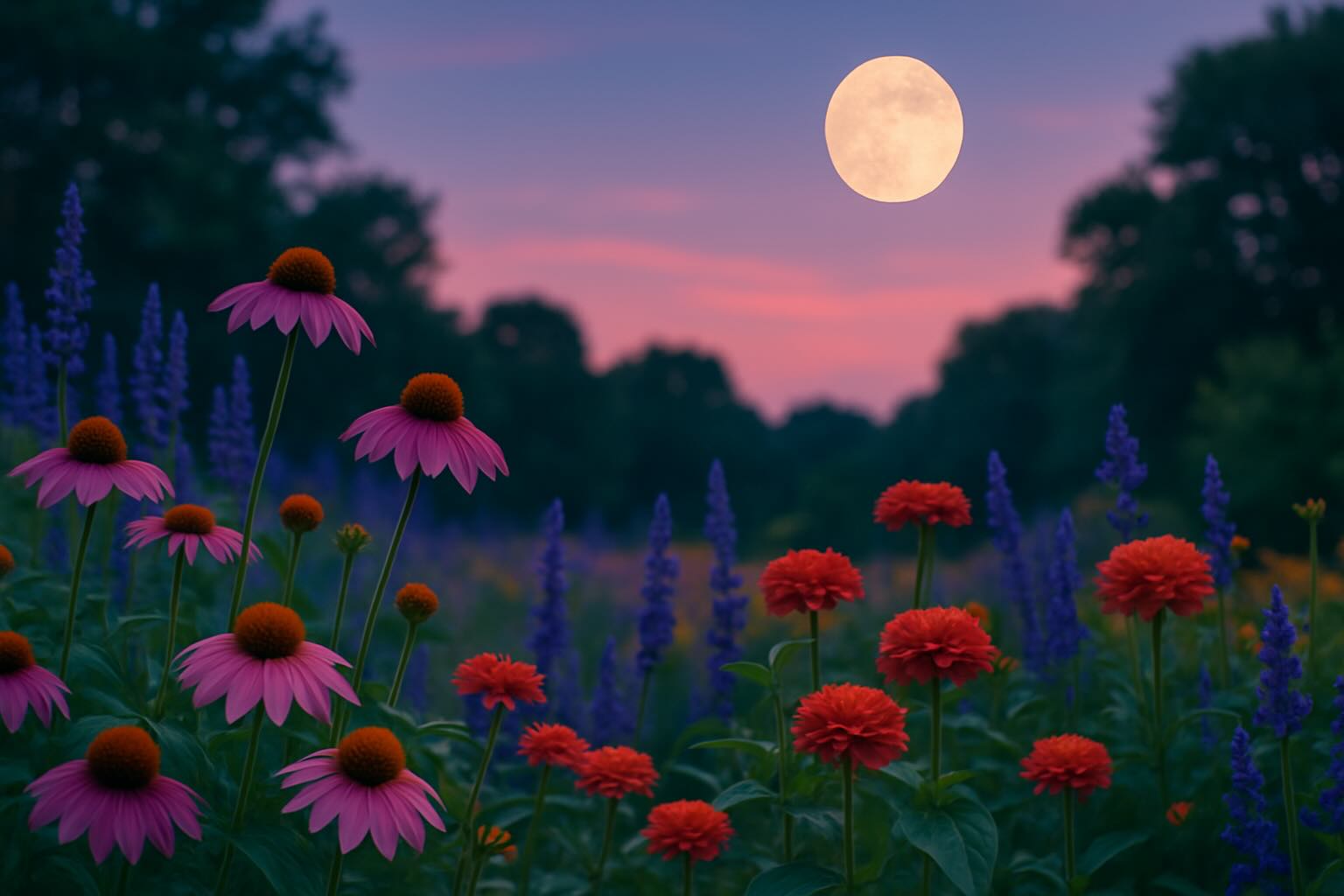Imagine stepping outside after sunset into a garden that glows under moonlight, filled with night-blooming flowers, fragrant herbs, and soft whispers of wind. Far from fanciful, this could become your nightly ritual—one that nurtures your well-being, sharpens your senses, and reconnects you to Earth’s rhythms.
The Secret Magic of Moon Gardens
Moon gardens are designed to shine at night. Think white or pale blossoms, silver foliage, and aromatic herbs whose scents release best after dark. These gardens demand little light but deliver so much: calm, beauty, and a new way to slow down.
Botanists and garden designers now call them a “living way to extend daylight well beyond sunset.” It’s not just about beauty—moon gardens encourage evening rituals, mindful walks, and a gentle transition from daily hustle to quiet reflection.
Why a Moon Garden Feels Like Self-Care
When you tend a garden by moonlight, you slow your pace. Watering, touching petals, inhaling fragrances—these actions shift your nervous system toward rest and reflection. The soft gleam of lunar glow is an invitation to pause.
Studies on nature therapy show that even brief nightly exposure to green spaces or garden views can lower cortisol, ease stress, and improve sleep. Combine that with the calming power of nocturnal scents like jasmine, evening primrose, or moonflower, and you have a powerful ritual for mental wellness.
How to Start Your Own Moon Garden
If you’ve ever wanted a garden that feels sacred at night, here’s how to begin:
Choose pale or white flowers like moonflower, evening primrose, jasmine, tuberose—these reflect moonlight beautifully. Pair with silver-leafed plants like lamb’s ear or dusty miller.
Include night-fragrant herbs like lavender, lemon balm, and mints, which release their scent best after sunset.
Lay out walking paths and seating—a simple loop path or bench encourages you to step outside after dark.
Use soft moonlighting (low-watt, cool-toned lights) just to navigate—don’t outshine the moon. Solar or LED options work well.
Time your care—water or tend plants in early evening. The dew helps reduce evaporation, and it aligns your rhythm with nature’s dusk transition.
What Happens When You Garden by Moonlight?
Your senses sharpen. The scent of night-bloomers intensifies. You start to notice small details—the way moonlight ripples on foliage, the hum of a moth, the whisper of grass. It becomes an active meditation.
Emotionally, your garden becomes a sanctuary. A refuge from screens and stress. Over time, you may notice deeper sleep, clearer thoughts, and a sense of gratitude for the natural cycles you once overlooked.
Tips to Make It Sustainable
Choose hardy drought-tolerant plants so your moon garden doesn’t require heavy effort. Mulch deeply to retain moisture overnight. Plant in a way that supports pollinators like moths and night bees.
Avoid high-wattage lighting. Let the moon be the star. If you need path lights, use dim solar LEDs with a warm, low glow.
Pair your garden with a simple ritual—journaling under moonlight, sipping herbal tea outdoors, or gentle stretching. These small acts turn your garden into a living habit of care.
Final Thoughts
In a world that never sleeps, cultivating a garden of moonlight gives you permission to rest differently. It’s not about productivity—it’s about presence. Over time, this ritual could become as essential to your well-being as your morning coffee.
Why not try a small moon garden corner this summer? Start with one plant, one path, one quiet evening—and let the moon do the rest.
